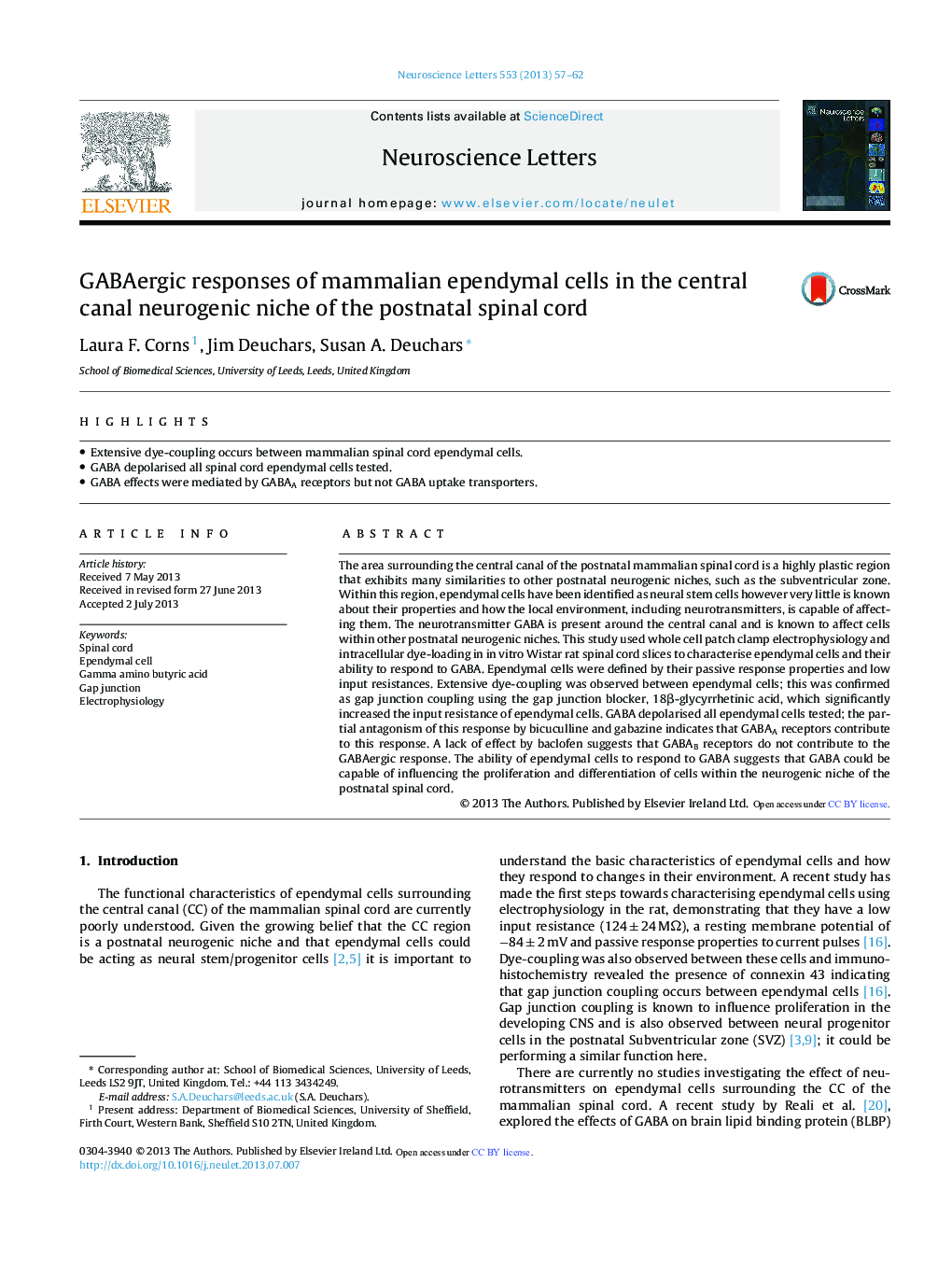| Article ID | Journal | Published Year | Pages | File Type |
|---|---|---|---|---|
| 6282656 | Neuroscience Letters | 2013 | 6 Pages |
â¢Extensive dye-coupling occurs between mammalian spinal cord ependymal cells.â¢GABA depolarised all spinal cord ependymal cells tested.â¢GABA effects were mediated by GABAA receptors but not GABA uptake transporters.
The area surrounding the central canal of the postnatal mammalian spinal cord is a highly plastic region that exhibits many similarities to other postnatal neurogenic niches, such as the subventricular zone. Within this region, ependymal cells have been identified as neural stem cells however very little is known about their properties and how the local environment, including neurotransmitters, is capable of affecting them. The neurotransmitter GABA is present around the central canal and is known to affect cells within other postnatal neurogenic niches. This study used whole cell patch clamp electrophysiology and intracellular dye-loading in in vitro Wistar rat spinal cord slices to characterise ependymal cells and their ability to respond to GABA. Ependymal cells were defined by their passive response properties and low input resistances. Extensive dye-coupling was observed between ependymal cells; this was confirmed as gap junction coupling using the gap junction blocker, 18β-glycyrrhetinic acid, which significantly increased the input resistance of ependymal cells. GABA depolarised all ependymal cells tested; the partial antagonism of this response by bicuculline and gabazine indicates that GABAA receptors contribute to this response. A lack of effect by baclofen suggests that GABAB receptors do not contribute to the GABAergic response. The ability of ependymal cells to respond to GABA suggests that GABA could be capable of influencing the proliferation and differentiation of cells within the neurogenic niche of the postnatal spinal cord.
